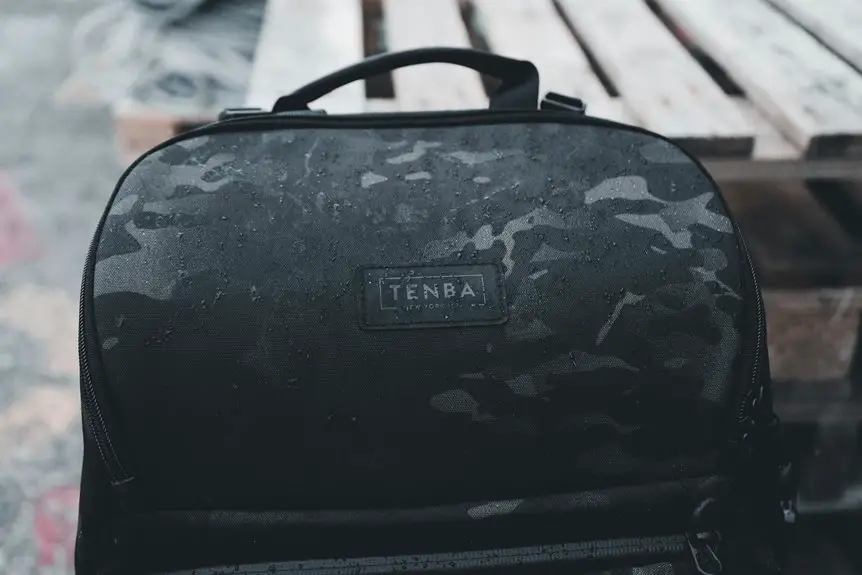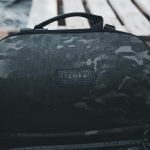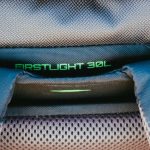When choosing luggage, durability is often top of mind, but deciding between Cordura and ballistic nylon isn’t straightforward. You might assume one fabric clearly outperforms the other, yet each offers unique strengths depending on how you travel and what you carry. Understanding their differences in durability and performance could make a big impact on your next purchase. Let’s explore what sets these materials apart.
Table of Contents
Key Takeaways
- Cordura offers superior abrasion resistance, making it ideal for luggage exposed to scuffs and surface wear.
- Ballistic nylon provides greater tear resistance, preventing rips and punctures from spreading in luggage.
- Cordura’s flexibility suits lightweight, rough-handling backpacks and duffel bags well.
- Ballistic nylon’s dense weave favors heavy-duty, protective luggage like business or hard-sided bags.
- Both fabrics require mild cleaning and proper storage to maintain durability and extend luggage lifespan.
Key Differences in Fiber Structure and Fabric Construction
When comparing Cordura and ballistic nylon, you’ll notice their fiber structures and fabric constructions play a big role in their performance.
Cordura uses high-tenacity nylon fibers known for their durability and abrasion resistance. Its fiber characteristics include a thicker denier, making it tougher and more rigid.
Ballistic nylon, originally designed for military use, features a specific weaving technique called a basket weave. This method tightly interlaces its fibers, enhancing its strength and resistance to punctures.
Cordura often employs a plain or ripstop weave, improving tear resistance without adding excessive weight.
Understanding these weaving techniques helps you see why Cordura feels more flexible but robust, while ballistic nylon is dense and tough.
Both fabrics’ fiber characteristics and construction directly influence their durability and suitability for luggage.
Abrasion Resistance Compared to Tear Strength
Although both Cordura and ballistic nylon offer impressive durability, they differ markedly in abrasion resistance and tear strength.
When you compare the two, you’ll notice:
- Cordura excels in abrasion testing, resisting surface wear much better than ballistic nylon.
- Ballistic nylon, originally developed for military use, shows superior tear resistance, preventing rips from spreading.
Both fabrics perform well under stress, but their strengths vary depending on your luggage’s exposure to rough surfaces or sharp objects.
If you’re concerned about scuffs and scrapes, Cordura’s abrasion resistance is your best bet.
On the other hand, if you expect your luggage to endure punctures or tears, ballistic nylon’s tear resistance offers an advantage.
Understanding these differences helps you pick the fabric that best matches your travel needs.
Practical Applications in Various Types of Luggage
Choosing between Cordura and ballistic nylon depends heavily on how you plan to use your luggage.
If your travel gear faces rough handling or outdoor adventures, Cordura offers excellent abrasion resistance, making it ideal for backpacks and duffel bags.
On the other hand, ballistic nylon’s dense weave excels in protecting against punctures and tears, which suits business or carry-on luggage that undergoes frequent airport handling.
For lightweight luggage types, Cordura provides flexibility without sacrificing durability, while ballistic nylon’s robust structure fits well with hard-sided or protective gear bags.
Understanding these practical applications helps you select the fabric that matches your travel needs, ensuring your luggage withstands wear and tear effectively throughout your journeys.
Maintenance, Longevity, and Environmental Considerations
Since you rely on your luggage to endure frequent trips, understanding how to maintain it can extend its lifespan considerably. Both Cordura and Ballistic Nylon require proper care instructions to maximize durability. You’ll want to:
- Clean your bag regularly with mild soap and water to prevent dirt buildup.
- Avoid harsh chemicals or abrasive brushes that can damage the fabric’s protective coating.
- Store luggage in a cool, dry place to prevent mildew and material degradation.
In terms of longevity, Cordura tends to resist abrasion better, while Ballistic Nylon excels in tear resistance.
Regarding environmental impact, both fabrics are synthetic and resource-intensive to produce, but some Cordura options incorporate recycled fibers, giving you a greener choice.
User Preferences and Aesthetic Appeal of Each Fabric
How do Cordura and Ballistic Nylon compare when it comes to user preferences and style?
If you value a broader range of color options, Cordura often wins, offering vibrant and diverse choices to match your personal taste. Its texture feel is typically softer and more fabric-like, which many find appealing for everyday use.
On the other hand, Ballistic Nylon has a sleeker, more industrial texture feel that conveys toughness and durability, appealing if you prefer a minimalist, professional look.
While Ballistic Nylon’s color options might be more limited, its aesthetic suggests ruggedness and reliability.
Ultimately, your choice depends on whether you prioritize a softer touch with varied colors or a bold, resilient appearance with a tighter texture feel in your luggage.
Frequently Asked Questions
Are Cordura and Ballistic Nylon Recyclable or Eco-Friendly Materials?
You’ll find both Cordura and Ballistic Nylon face recycling challenges, so they aren’t very eco-friendly. However, some brands improve sustainability practices by using recycled fibers or encouraging product recycling, helping reduce environmental impact over time.
Which Fabric Is Better Suited for Waterproof Luggage Designs?
You’ll find ballistic nylon better suited for waterproof luggage designs because it often comes with superior waterproof coatings, enhancing moisture resistance. While Cordura resists wear, ballistic nylon handles wet conditions more effectively for your travels.
Can Cordura or Ballistic Nylon Be Easily Repaired if Damaged?
You can easily repair both fabrics using patching and specialized adhesives, which boosts fabric longevity. Just make sure to follow proper repair techniques to maintain durability and keep your luggage in great shape after damage.
How Do These Fabrics Perform in Extreme Temperature Conditions?
You’ll find both fabrics offer good temperature resistance, maintaining fabric durability in extreme heat and cold. However, Cordura’s nylon blend generally performs better under harsh temperature conditions, keeping your gear protected and durable over time.
Are There Any Significant Weight Differences Between Cordura and Ballistic Nylon?
Imagine carrying a leather satchel from the 1800s; now, for your weight comparison, Cordura’s lighter feel won’t slow you, while ballistic nylon packs serious fabric strength but weighs just a bit more—perfect for your modern needs.
- Tetron Fabric for Marine Applications: Durability and Use Cases - June 18, 2025
- Tetron Fabric for Outdoor Furniture: Weather Resistance and Care - June 18, 2025
- Tetron Fabric for Wall Coverings: Style and Application Tips - June 18, 2025







